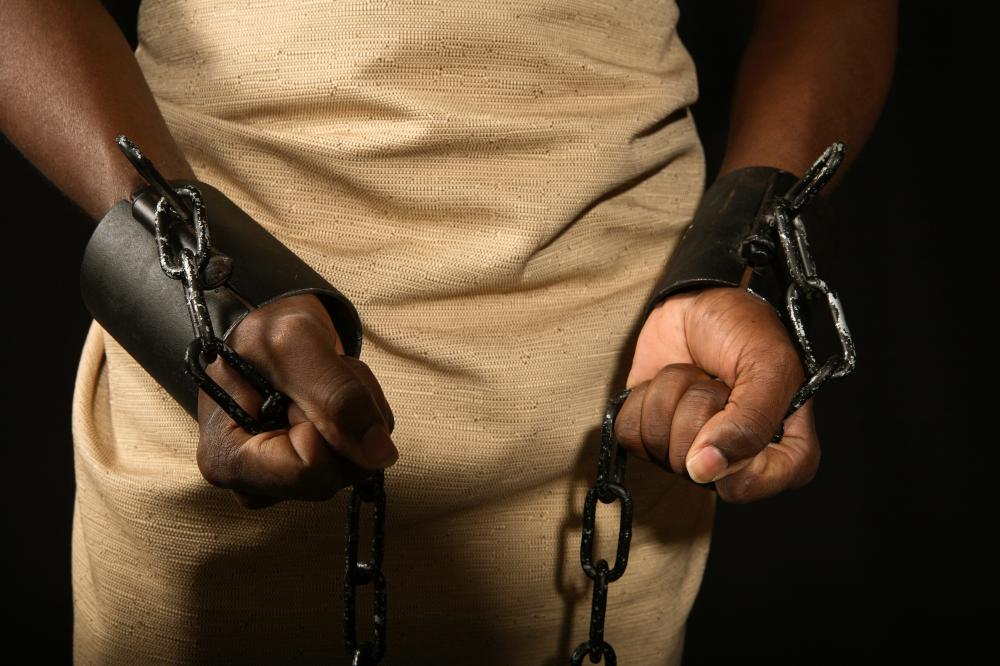At WiseGEEK, we're committed to delivering accurate, trustworthy information. Our expert-authored content is rigorously fact-checked and sourced from credible authorities. Discover how we uphold the highest standards in providing you with reliable knowledge.
What Is the Anti-Slavery Society?
The American Anti-Slavery Society was an abolitionist group, established in 1833 for the purpose of outlawing slavery, which at the time was legal in the United States. In fact, the Missouri Compromise of 1820 ensured slavery’s survival and growth for the foreseeable future. Local abolition organizations existed, but they weren’t very successful. The American Colonization Society (ACS), which advocated “repatriating” freed slaves to Africa, enjoyed some support but was controversial. On the other hand, the violent slave rebellions like Nat Turner’s 1831 uprising only killed people and strengthened the determination of the South to impose stern discipline on those of its slaves who revolted.
It was in this unsettled political climate that the Anti-Slavery Society was launched as a national organization by a convention of abolitionists in Philadelphia. Two Americans prominent in abolitionist circles, William Lloyd Garrison and Arthur Tappan, are generally credited with starting the Society. Garrison wrote the founding declaration, which essentially characterized slavery as a sin and called for its abolition without consideration or recompense for the slaveholders. Compensating slaveholders for freed slaves would recognize them still as property with only economic value, Garrison reasoned. The declaration went on to criticize the ACS’ aims as “delusive, cruel and dangerous.”

Highly successful in its stated goals of establishing chapters nationwide, at its peak the Anti-Slavery Society had over 1300 local chapters and a quarter-million members nationwide. Frederick Douglass, who had escaped from slavery as a young man and himself had become a pre-eminent leader of the abolition movement, was a leader of the Society and frequently addressed its meetings. Other freed and escaped slaves were members of the Society, but the bulk of its membership was drawn from the ranks of philanthropy and religious circles. The Anti-Slavery Society's aims, though, were very controversial, and its meetings were sometimes disrupted, and some of its offices and printing presses destroyed.

In 1834, anti-abolitionist riots, sometimes called the Farren Riots, moved through the streets of New York City for four days. The causes of these riots are generally held to be a basic misunderstanding of the Society’s goals. After the riots, some members of the Society, including Tappan, felt compelled to issue a statement clarifying those goals. They insisted that they were not promoting intermarriage between the races, for example, nor were they encouraging lawlessness or federal usurpation of states’ rights.

Tensions escalated within the Society. Garrison took the radical position of denouncing the US Constitution as legitimizing slavery. In addition, he and those in his camp supported the assumption of significant roles in the Society by women, another radical position which led a handful of anti-feminists to leave the Society.
In 1839, Tappan and his more moderate supporters split from the Society, forming the American and Foreign Anti-Slavery Society. They were oriented toward working within the system, using such tools as moral suasion and political activity to accomplish their goals. In 1840, they formed the Liberty Party for the purpose of putting up abolitionist candidates for public office.

The schism within the abolitionist movement didn’t slow the growth of anti-slavery sentiment, however. Slavery became a greater issue in local elections and ultimately in national elections as well, with the formation of the Free-Soil and Republican Parties. The election of 1860 put Abraham Lincoln in the White House and set in motion a series of events that led to the Civil War and the adoption of the 13th, 14th and 15th Amendments to the US Constitution. These amendments not only ended slavery as an institution in the US, they officially made the freed slaves citizens of the US with all attendant rights and privileges.
The fact that full civil rights wouldn’t be accorded freed slaves, or their children, or even their grandchildren, for another century or so, didn’t diminish the work of the Anti-Slavery Society and the different groups it spawned. Their goals had largely been accomplished. Slavery had been outlawed in the US, the former slave-owners were not compensated, and the expatriation of freed slaves was not pursued as official policy subsequent to emancipation. Thus, in 1870, the Anti-Slavery Society declared victory and disbanded itself.
AS FEATURED ON:
AS FEATURED ON:














Discuss this Article
Post your comments